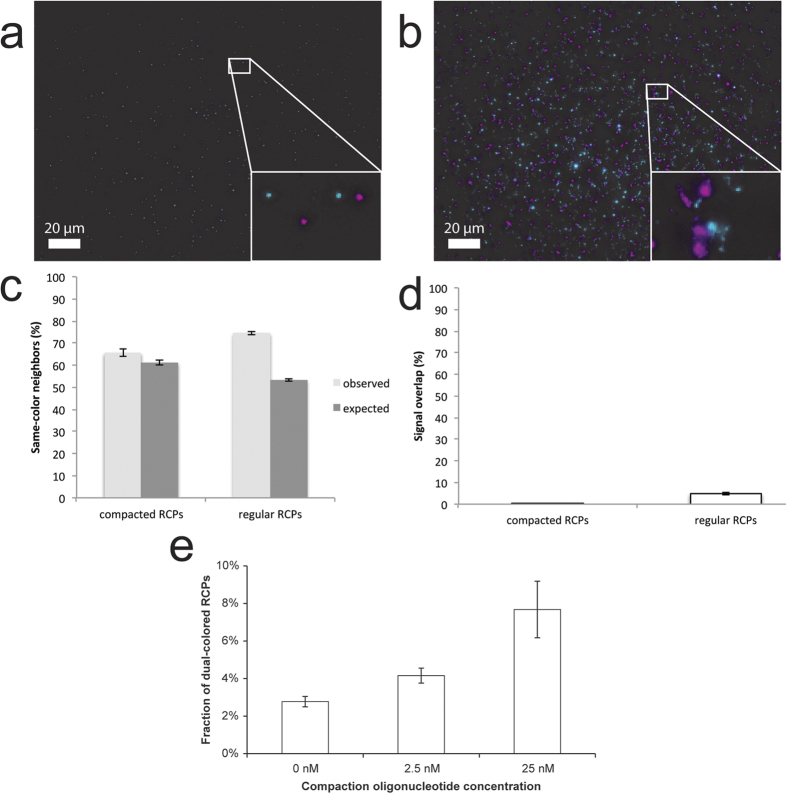Figure 3.
Signal integrity of regular vs. compacted RCPs. Compacted RCPs (a) are compared to regular RCPs (b), produced in a spatially random distribution from two different circular templates giving rise to RCPs appearing in two different wavelengths (pseudo-colored as magenta and cyan). For compacted RCA, the frequency of same-color neighbors is 65.6% (c; s.e.m. 1.8%) which is within the expected frequency as determined by Monte Carlo simulation (61.2%; s.e.m. 1.1%). For regular RCA, the frequency is 74.5% (s.e.m. 0.7%) which is significantly more than expected by Monte Carlo simulation (53.3%; s.e.m. 0.5%; p < 0.001, two tailed t-test)). Looking at the signal overlap (d), this shrinks to 0.23% (d; s.e.m. 0.07 ) by application of the compaction oligonucleotide. The overlap turned out to be 4.78% (s.e.m. 0.49%) for regular RCPs. The two groups are significantly different in signal overlap (p < 0.001 [two-tailed t-test]). Error bars are standard errors of the means. To study the effects of the new oligonucleotide design in solution, two types of RCPs labelled with either Cy3 or Cy5 were produced together with 0, 2.5 or 25 nM of compaction oligonucleotide in solution (3e). The fraction of dual-colored RCPs was determined to depend upon the concentration of the compaction oligonucleotide (p = 0.022 [ANOVA]). The fraction of dual-colored RCPs was not significantly different between 0 and 2.5 nM of the compaction oligonucleotide (p = 0.326 [ANOVA with LSD post hoc test]), but a significant difference was found between 0 and 25 nM (p = 0.009 [ANOVA with LSD post hoc test]), and between 2.5 and 25 nM (p = 0.034 [ANOVA with LSD post hoc test].) The fraction of dual-colored RCPs at 0 nM of the compaction oligonucleotide is 2.78% (s.e.m. 0.28%, n = 3, total of 63,795 signals) for 2.5 nM it is 4.16% (s.e.m. 0.69%, n = 3, total of 43,542 signals) and for 25 nM it is 7.68% (s.e.m. 2.61%, n = 3, 14,019 signals). Error bars are standard errors of the means.

